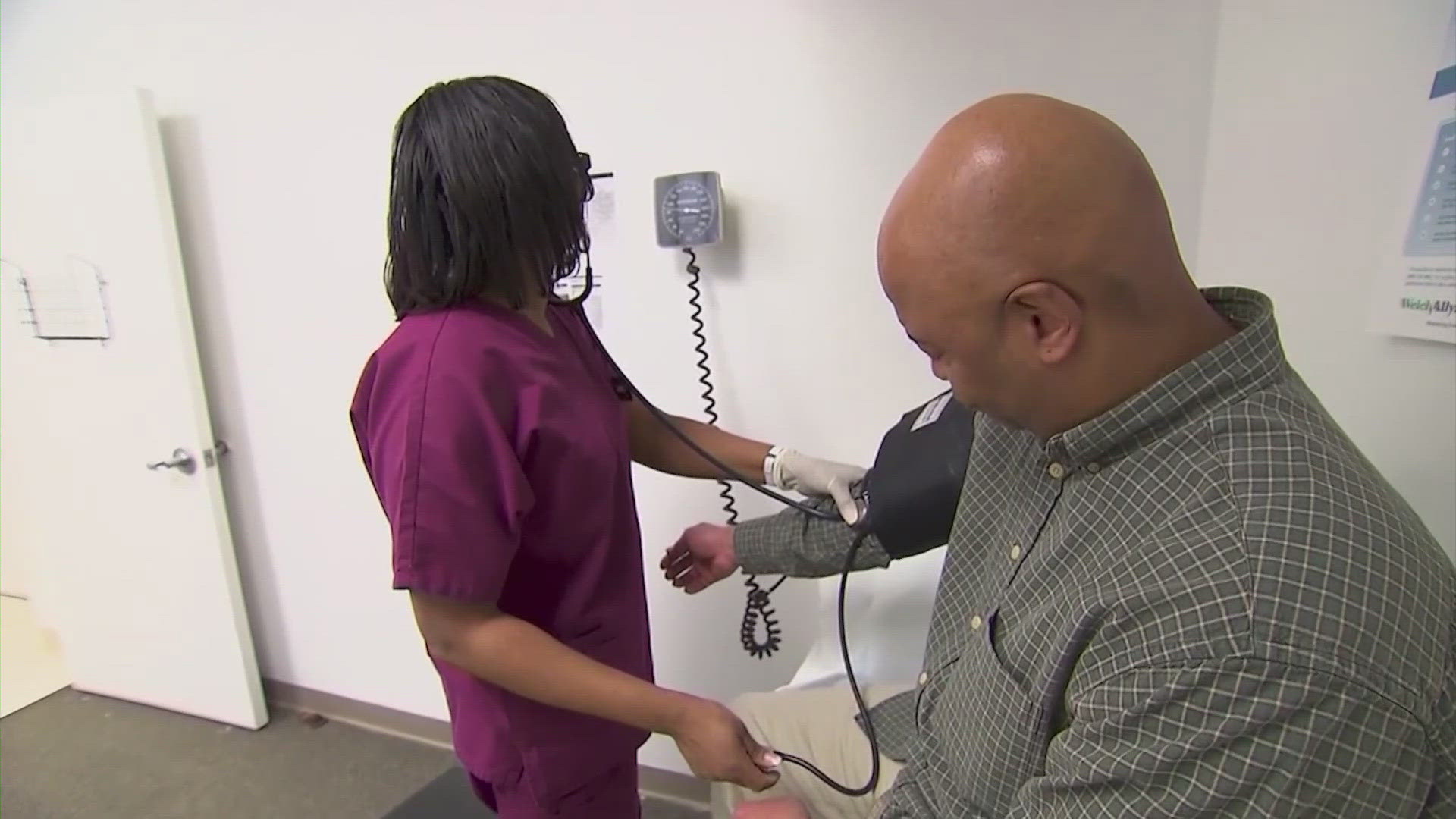HOUSTON — Cancer is the second leading cause of death among women in the United States. Breast cancer now tops the list as the most common cancer type in women, based on estimated new cancer cases in 2024, which is why screening is essential.
Several factors can affect what type of breast screening you need and when to get one. Allan R. Katz, MD, FACOG, an OB-GYN with UT Physicians and the Robert K. Creasy, MD professor in OB-GYN at McGovern Medical School at UTHealth Houston, sheds light on this important breast health topic. When cancer is detected early, you have the most options for treatment. Without a doubt, early detection can save lives.
New FDA guidelines enacted in September 2024 require women to be informed about their breast density following mammograms. Experts believe this knowledge will help women be more aware of options and catch cancer earlier. Although this has been required in Texas since 2012, the national mandate is a powerful step.
Breast screening guidelines follow level of risk
For screening purposes, women fall into two risk categories for breast cancer: average or high. Each risk category comes with different screening recommendations.
“A woman is considered at average risk if she does not have a personal history of breast cancer, a strong family history of it, chest radiation therapy, or a genetic mutation that would increase her risk,” said Katz.
Women who are at high risk for breast cancer have one or more possible risk factors. These include having radiation therapy to the chest area between the ages of 10 and 30, or being diagnosed or having an immediate family member diagnosed with a BRCA1 or BRCA2 gene mutation, Li-Fraumeni syndrome, Cowden syndrome, or Bannayan-Riley-Ruvalcaba syndrome.
Many providers recommend yearly mammograms between the ages of 40 and 50. Young women may have more aggressive forms of cancer before menopause, so annual screenings are important. After menopause, or around age 55, women can get mammograms every one to two years and continue through 75 and as long as appropriate for them.
The decision about when to start and stop screening mammography and how often should involve shared decision-making between you and your physician.
A breast cancer screening is quick
The screening process only takes about 15 to 20 minutes. A mammogram can be uncomfortable for some, but your test results are ready quickly. Knowing your current breast health can be reassuring, and if there is a problem, finding out early increases the treatment options you have.
Screening tests offer different benefits and risks
You can be screened for breast cancer at a clinic, hospital, doctor’s office, imaging center, or even an equipped mobile van. The main purpose of screening is to check a woman’s breasts for any findings suspicious for cancer. When an issue is diagnosed early, it can lead to better outcomes and lower the risk of death. The screening you need depends on age, health, lifestyle, or other personal risk factors.
“There are different types of screenings available, and each one has its benefits and risks,” said Katz. “Talk to your doctor to discuss what screening option is best for you.”
Screening tests for breast cancer are different than diagnostic tests. Screening is done on patients without any physical findings or complaints. If you notice a lump in your breast or have a specific breast complaint, speak with your provider. In that situation, diagnostic testing may be needed.
Screening Mammogram
A mammogram is a digital X-ray of the breast that can find lumps that may be too small to be detected or felt during a clinical exam or self-examination. While this type of screening will not find everything, it is still considered the best way to screen for breast cancer. These digital 2D mammograms are standard. In comparison, 3D mammograms utilize the latest technology in digital breast imaging and improve detection capabilities.
Breast ultrasound
An ultrasound uses sound waves to detect changes in the breast that may be harder to identify from a mammogram, such as differentiating between fluid-filled cysts versus a solid mass.
Breast MRI
An MRI uses radio waves and strong magnets to screen for breast cancer that cannot be seen in a mammogram. MRIs are used as an additional screening tool for women considered high-risk, alongside a mammogram.
Self-examination
A breast self-exam helps you understand the usual look and feel of your breasts. If you notice a change that seems abnormal, speak with your doctor. Self-exams are not considered a reliable way to detect breast cancer, but it is important to be familiar with and aware of the normal consistency of your breasts.
Early detection can save your life
Screening cannot prevent cancer. If breast cancer is detected early, you have more, less invasive treatment options.
Mammograms are covered by most insurance
Medicare, Medicaid, and most insurance companies cover the cost of screening mammograms. Please check with your insurance company to determine which locations or types of screenings are covered.
If you don’t have insurance or your current insurance doesn’t cover screenings, you may be eligible for free or low-cost screenings in your area.
Men at high risk should get breast cancer screenings, too
Even though it is rare for men to get breast cancer, men who are at risk or have symptoms of breast cancer may need a mammography screening. Generally, breast cancer screenings are not recommended for men unless they have a family history of BRCA1 or BRCA2 gene mutation.
Screening results dictate next steps
If your results are normal, you are all clear. You can schedule your next routine screening. If you had an abnormal result, there is a good chance that it is noncancerous or just normal breast tissue. Your doctor will recommend follow-up steps for further evaluation.
“Most of the time, abnormal results do not turn out to be breast cancer,” said Katz. “The only way to know for certain is by performing follow-up tests to rule out or confirm a diagnosis.”
For more information on UT Physicians Women’s Centers or to schedule an appointment, call 832-325-7131 or request one online. To learn more about breast cancer, visit our medical conditions glossary.
UT Physicians is a sponsor of KHOU 11's Health Matters.



